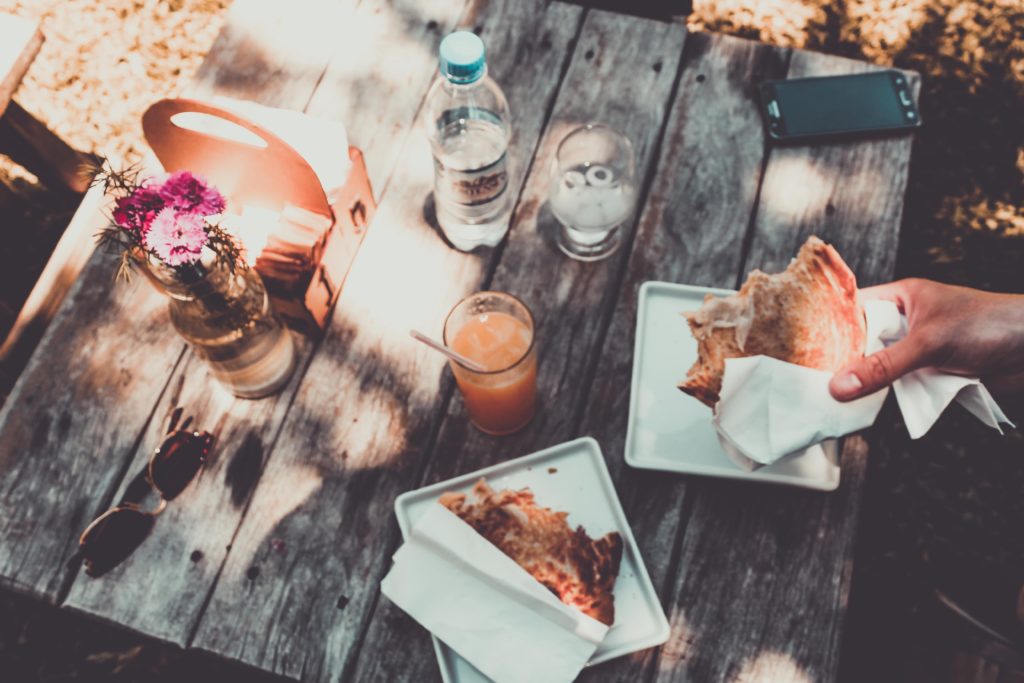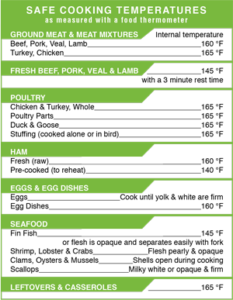All fields are required
Posted in Food Safety,Outbreaks & Recalls,Staphyloccocous on June 28, 2018

Ahh summertime. Outside of Fall, it is my favorite time of year. I’m not a fan of winter, which is odd considering I live in the North West. If you were to ask what makes the warmer times of the year my favorite I would answer without hesitation: cooking out. There is nothing better than eating food outside in the fresh air.
Pitfalls still hinder the summer picnic though. At the top of that list is the danger of eating food that was either prepared incorrectly or left out in the sun too long. I shudder to recount this true story, but it has relevance.
Years ago, I will not date myself but I was in my junior-high years, I attended a church picnic. When it comes to summertime food consumption, I have always been a connoisseur; and the bigger, the better. Unfortunately, I cannot recall much about the quality or quantity of the spread that particular day. I am positive it was wonderful. It is overshadowed by the night’s activities: the worst case of food poisoning in my life. There is no shame in saying I would have rather died that night. I will spare you the details, but suffice it to say I spent many long and torturous hours getting to know the toilet on a personal level. What made this night worse was my mother was in the other bathroom with the same affliction. It took us a few discussions, but we finally got to the bottom of it: spoiled mayonnaise from some random salad we both had taken and eaten.
When it comes to picnic food safety, there is tons of information out there. Some of it we should use in the kitchen as well as outside so there is a ‘no-brainer’ aspect here. Some of it may surprise you though. And some is just plain good practices we should get into the habit of doing when we fix food with the potential for spoiling. I want to focus on picnic practices and pitfalls and how to avoid them, keeping our food safe from the elements, and briefly discuss good grilling guidelines.
Before the Picnic
It goes without saying the biggest enemy to a great picnic (besides the ants) is heat and sunlight. When planning a picnic, it is imperative to consider the sun and the part it will play. Even on an overcast day, heat can ruin all your hard work and fun.
According to an article in Better Homes & Gardens, never pre-cook food with the intent of finishing it later on the grill. Keeping food raw until it is ready to be prepared keeps bacteria at a minimum – even though cooking meat properly should remove any harmful bacteria. The exception to this is pre-cooking in your kitchen and transferring to an outside grill on your patio.
Keeping food cold before time to eat can be tricky. The rule of thumb is 40 degrees or below before serving. Ice is your best friend. Keep dishes sitting in ice no longer than 2 hours – 1 hour if the temperature is over 90 degrees outside. Any longer than this and it has to be discarded.
DO NOT try to cool the food and serve it again.
After food is cooked, it is better to maintain a 140 degrees temperature or higher to keep bacteria from settling on the food.
I know this is a lot of temperature control but it’s better to be safe than sorry when it comes to food. Keeping food out too long, not cooking it or keeping it at the right temperature, and not chilling other foods is a recipe for disaster.
It’s All About the Container Baby
I am in no way trying to insult anyone’s intelligence; I have made these mistakes myself in the past. As I said, this is much easier when you are grilling out in your back yard but that is not always the case. If you need to transport food to and from a picnic, the best practice is putting it in a cooler.
We all know how dangerous cross contamination can be – this is another time and place where the rules need to be heeded.
Pro Tip: Don’t just dump out melted ice; it is a great source of water for washing. Just make sure nothing spilled into the ice first.
Good Grilling is Next to Godliness
If there was one tip I could say to you that you would remember about grilling, it would be: ALWAYS CHECK THE TEMP.
There is little else as important as making sure your food is cooked. Safety is of course a concern as is knowing how to grill but those things need to be understood before you strike a match. If your food is undercooked you have failed to remove any harmful bacteria.
I found a nice graphic from the FDA breaking down individual meats and giving a recommended core temperature. Print this out and stick it somewhere you will see it when you grill out.

Also from the same site: “Color and texture are unreliable indicators of safety. Using a food thermometer is the only way to ensure the safety of meat, poultry, seafood, and egg products for all cooking methods.”
Pro Tip: Always use a separate prepared marinade to baste with.
Get out there and get picnic’n
Being prepared is the best remedy for food safety this summer. I’m a huge fan of information, and this is no different. Know what you’re serving before you pack. Make sure you pack to not cross-contaminate and leak. Use plenty of ice or ice packs to keep food as cool as possible. Serve food when it is done, and DO NOT let it sit out. Last, but not least (and this is the most important one):
HAVE FUN AND STAY FOOD SAFE!
By: Dwight Spencer, Contributing Writer (Non-Lawyer)